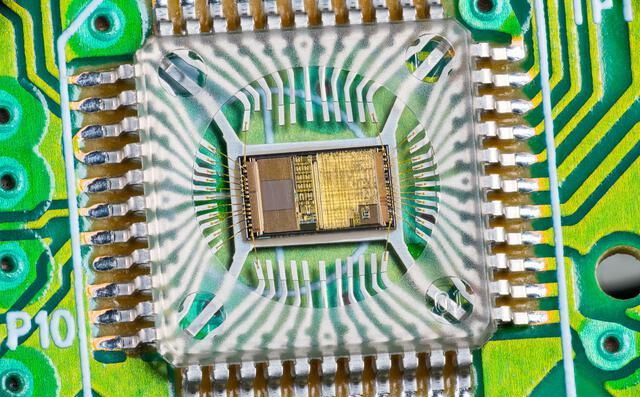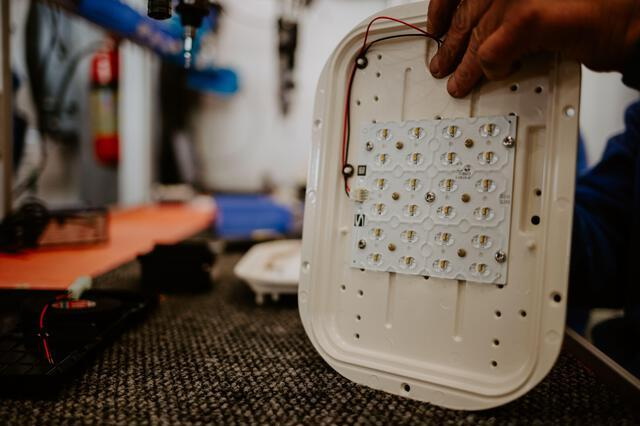Content Menu
● Overview of SMT Assembly Process
● Essential Tools for SMT Assembly
>> Solder Paste Printing Machine
>> Solder Paste Inspection (SPI) Machine
>> Pick-and-Place Machine
>> Reflow Soldering Machine
>> Automatic Optical Inspection (AOI) Machine
● Additional Tools for Enhanced Efficiency
>> Glue Dispensing Machine
>> Cleaning Equipment
>> Functional Test Fixtures
● Detailed Steps in SMT Assembly
>> Material Preparation and Testing
>> Solder Paste Printing
>> Component Placement
>> Reflow Soldering
>> Cleaning Process
>> Inspection and Testing
● Conclusion
● FAQs
>> 1. What is Surface Mount Technology (SMT)?
>> 2. Why is solder paste important in SMT assembly?
>> 3. How does a pick-and-place machine improve production speed?
>> 4. What role does inspection play in SMT assembly?
>> 5. Can SMT assembly be done manually?
● Citations:
Surface Mount Technology (SMT) has transformed the landscape of electronic assembly, enabling manufacturers to produce compact and efficient printed circuit boards (PCBs). This method allows for the direct mounting of components onto the surface of PCBs, which streamlines production and enhances performance. In this comprehensive guide, we will delve into the essential tools and equipment necessary for the SMT PCB assembly process, covering each stage of the assembly line in detail.

Overview of SMT Assembly Process
The SMT assembly process can be broken down into several critical stages:
- Solder Paste Application: The initial step involves applying solder paste to the PCB.
- Component Placement: Automated machines place components onto the solder paste.
- Soldering: The components are soldered to the board using a reflow oven.
- Inspection: Assembled boards undergo inspection to ensure quality.
Understanding the tools required for each of these stages is crucial for efficient and effective PCB assembly.
Essential Tools for SMT Assembly
Solder Paste Printing Machine
The solder paste printing machine is vital in the initial stage of SMT assembly. It applies solder paste onto specific areas of the PCB where components will be mounted.
- Functionality: A stencil is placed over the PCB, and solder paste is spread across it using a squeegee. The stencil has openings that correspond to the pads on the PCB, ensuring that solder paste is applied only where needed.
- Importance: Proper application of solder paste is vital; too much or too little can lead to defects in solder joints. Additionally, a solder paste mixer may be used to ensure uniform consistency before application, enhancing print quality.
Solder Paste Inspection (SPI) Machine
After solder paste application, an SPI machine inspects the quality and accuracy of the paste placement.
- Functionality: This machine uses cameras and sensors to verify that the solder paste has been applied correctly in terms of volume and position. 2D and 3D SPI machines can measure height, width, and volume, detecting issues like missing paste or solder bridges.
- Importance: Early detection of issues can prevent costly errors later in the assembly process.
Pick-and-Place Machine
The pick-and-place machine automates the placement of components onto the PCB.
- Functionality: It uses suction cups or grippers to pick components from feeders and accurately place them on top of the solder paste. Advanced machines can place thousands of components per hour with high precision.
- Importance: This machine significantly speeds up production compared to manual placement, reducing labor costs and minimizing human error.
Reflow Soldering Machine
Once all components are placed, they must be soldered to the PCB using a reflow soldering machine.
- Functionality: The PCB passes through a reflow oven where it is heated in controlled zones, allowing the solder paste to melt and create strong electrical connections. The reflow process typically includes preheat, soak, reflow, and cooling zones.
- Importance: Proper temperature control during this process is crucial to avoid damaging sensitive components or creating weak joints.
Automatic Optical Inspection (AOI) Machine
After soldering, AOI machines inspect the assembled PCBs for defects.
- Functionality: These machines use cameras to scan the boards and identify issues such as misaligned components or insufficient solder joints.
- Importance: AOI helps ensure that only high-quality PCBs proceed to final testing or packaging.
Additional Tools for Enhanced Efficiency
In addition to the primary tools mentioned above, several other machines and tools can enhance efficiency and quality in SMT assembly:
Glue Dispensing Machine
In some cases, adhesive may be used alongside solder paste to secure components that are sensitive to heat or require additional bonding strength. This is particularly important for larger components or those with low thermal tolerance.
Cleaning Equipment
After soldering, cleaning equipment removes excess flux and residues from the PCB surface, ensuring optimal performance and reliability. This step is essential for preventing corrosion and ensuring electrical conductivity.
Functional Test Fixtures
These fixtures are used during final testing to verify that all components are functioning as intended before shipment. They help ensure that any faults are detected early in production.

Detailed Steps in SMT Assembly
To better understand how these tools fit into the overall process, let's explore each step involved in SMT assembly:
Material Preparation and Testing
Before any assembly begins, all materials must be prepared and tested for quality assurance:
- Ensure that PCBs have flat copper pads free from defects.
- Verify that surface mount components (SMCs) meet specifications.
- Prepare stencils according to design files for accurate solder paste application.
Solder Paste Printing
This step involves applying solder paste accurately using a stencil:
- The stencil is aligned with precision over the PCB.
- Solder paste is applied evenly across openings in the stencil using a squeegee at an angle between 45° to 60°.
- After printing, an SPI machine inspects the application for consistency and accuracy.
Component Placement
Once solder paste is applied correctly:
- Pick-and-place machines take over by picking components from their feeders.
- Components are placed accurately onto their corresponding pads on the PCB.
- Advanced pick-and-place machines can achieve speeds up to 80,000 components per hour while maintaining precision.
Reflow Soldering
The next phase involves permanently attaching components through reflow:
- The assembled PCBs are passed through a reflow oven where they undergo several temperature zones: preheat (140℃–160℃), soak (maintaining temperature), reflow (210℃–230℃), and cooling.
- Each zone serves a specific purpose in ensuring proper melting of solder without damaging sensitive components or causing defects like cold joints.
Cleaning Process
After reflow soldering:
- PCBs are cleaned using specialized equipment to remove any residual flux or contaminants.
- This cleaning step ensures long-term reliability by preventing corrosion that could affect electrical connections.
Inspection and Testing
Following cleaning:
- Various inspection methods are employed, including AOI machines that provide fast feedback on component placement accuracy.
- Functional test fixtures verify that each component operates correctly under expected conditions before final packaging.
Conclusion
The SMT PCB assembly process relies heavily on specialized tools and equipment that work together seamlessly to produce high-quality electronic assemblies efficiently. From initial material preparation through inspection and testing, each tool plays a critical role in ensuring accuracy and reliability in production. Understanding these tools not only helps manufacturers streamline their processes but also enhances product reliability and performance in an increasingly competitive market.

FAQs
1. What is Surface Mount Technology (SMT)?
Surface Mount Technology (SMT) is a method used for assembling electronic components directly onto the surface of printed circuit boards (PCBs), allowing for more compact designs compared to traditional through-hole methods.
2. Why is solder paste important in SMT assembly?
Solder paste serves as both an adhesive and a conductive material that connects electronic components to their respective pads on a PCB when heated during reflow soldering.
3. How does a pick-and-place machine improve production speed?
Pick-and-place machines automate component placement, allowing them to place thousands of components per hour with high precision, significantly reducing manual labor time and potential errors compared to manual methods.
4. What role does inspection play in SMT assembly?
Inspection processes such as SPI and AOI are crucial for identifying defects early in production, ensuring that only properly assembled PCBs proceed through testing and packaging stages while maintaining high-quality standards.
5. Can SMT assembly be done manually?
While manual SMT assembly is possible using basic tools like tweezers and a soldering iron, automation through specialized machines greatly enhances speed, accuracy, and overall quality of production compared to manual efforts which tend to be slower and more error-prone.
Citations:
[1] https://www.raypcb.com/smt-lines/
[2] https://www.ablcircuits.co.uk/blog/smt-and-tht-assembly-process/
[3] https://hilelectronic.com/surface-mount-technology/
[4] https://jhdpcb.com/pcb-assembly/smt-assembly/
[5] https://www.protoexpress.com/kb/pcb-assembly-process-overview/
[6] https://www.circuits-central.com/blog/a-comprehensive-guide-to-surface-mount-technology-in-pcb-assembly/
[7] https://www.wevolver.com/article/smt-process
[8] https://www.protoexpress.com/kb/smt-assembly/
[9] https://www.raypcb.com/printed-circuit-boards-assembly-process/
[10] https://hilelectronic.com/smt-equipment/
[11] https://www.medicaldesignbriefs.com/component/content/article/46458-surface-mount-technology-for-pcb-assembly-use-case-and-smt-in-healthcare-systems
[12] https://hackaday.com/2021/02/02/learn-bil-herds-diy-surface-mount-assembly-process/
[13] https://www.pcbtok.com/surface-mount-technology/
[14] https://www.pcbgogo.com/Article/How_does_double_sided_SMT_assembly_work_.html
[15] https://www.pcbcart.com/article/content/smt-assembly-development-trend.html




















